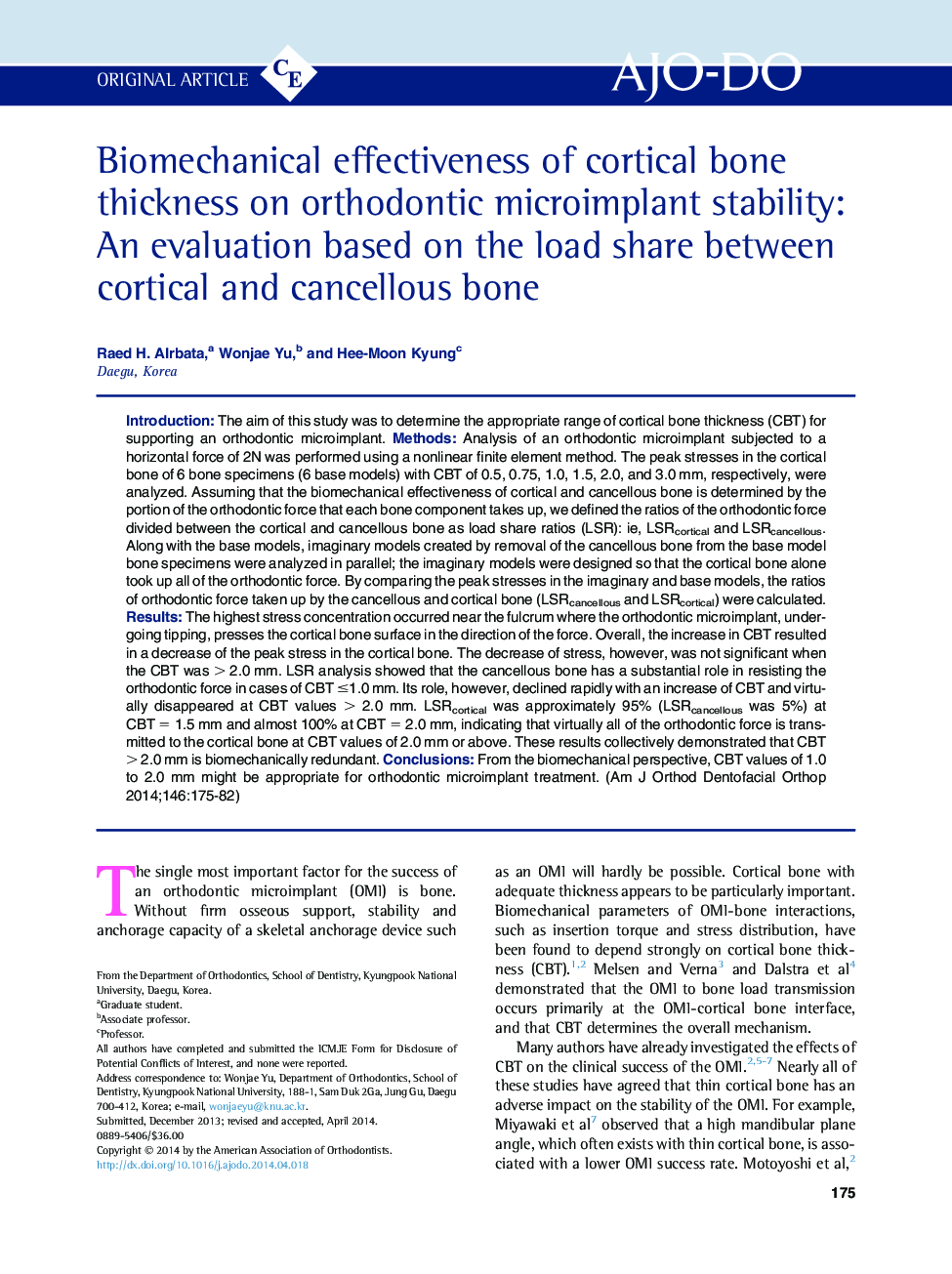| Article ID | Journal | Published Year | Pages | File Type |
|---|---|---|---|---|
| 3116413 | American Journal of Orthodontics and Dentofacial Orthopedics | 2014 | 8 Pages |
IntroductionThe aim of this study was to determine the appropriate range of cortical bone thickness (CBT) for supporting an orthodontic microimplant.MethodsAnalysis of an orthodontic microimplant subjected to a horizontal force of 2N was performed using a nonlinear finite element method. The peak stresses in the cortical bone of 6 bone specimens (6 base models) with CBT of 0.5, 0.75, 1.0, 1.5, 2.0, and 3.0 mm, respectively, were analyzed. Assuming that the biomechanical effectiveness of cortical and cancellous bone is determined by the portion of the orthodontic force that each bone component takes up, we defined the ratios of the orthodontic force divided between the cortical and cancellous bone as load share ratios (LSR): ie, LSRcortical and LSRcancellous. Along with the base models, imaginary models created by removal of the cancellous bone from the base model bone specimens were analyzed in parallel; the imaginary models were designed so that the cortical bone alone took up all of the orthodontic force. By comparing the peak stresses in the imaginary and base models, the ratios of orthodontic force taken up by the cancellous and cortical bone (LSRcancellous and LSRcortical) were calculated.ResultsThe highest stress concentration occurred near the fulcrum where the orthodontic microimplant, undergoing tipping, presses the cortical bone surface in the direction of the force. Overall, the increase in CBT resulted in a decrease of the peak stress in the cortical bone. The decrease of stress, however, was not significant when the CBT was > 2.0 mm. LSR analysis showed that the cancellous bone has a substantial role in resisting the orthodontic force in cases of CBT ≤1.0 mm. Its role, however, declined rapidly with an increase of CBT and virtually disappeared at CBT values > 2.0 mm. LSRcortical was approximately 95% (LSRcancellous was 5%) at CBT = 1.5 mm and almost 100% at CBT = 2.0 mm, indicating that virtually all of the orthodontic force is transmitted to the cortical bone at CBT values of 2.0 mm or above. These results collectively demonstrated that CBT > 2.0 mm is biomechanically redundant.ConclusionsFrom the biomechanical perspective, CBT values of 1.0 to 2.0 mm might be appropriate for orthodontic microimplant treatment.
